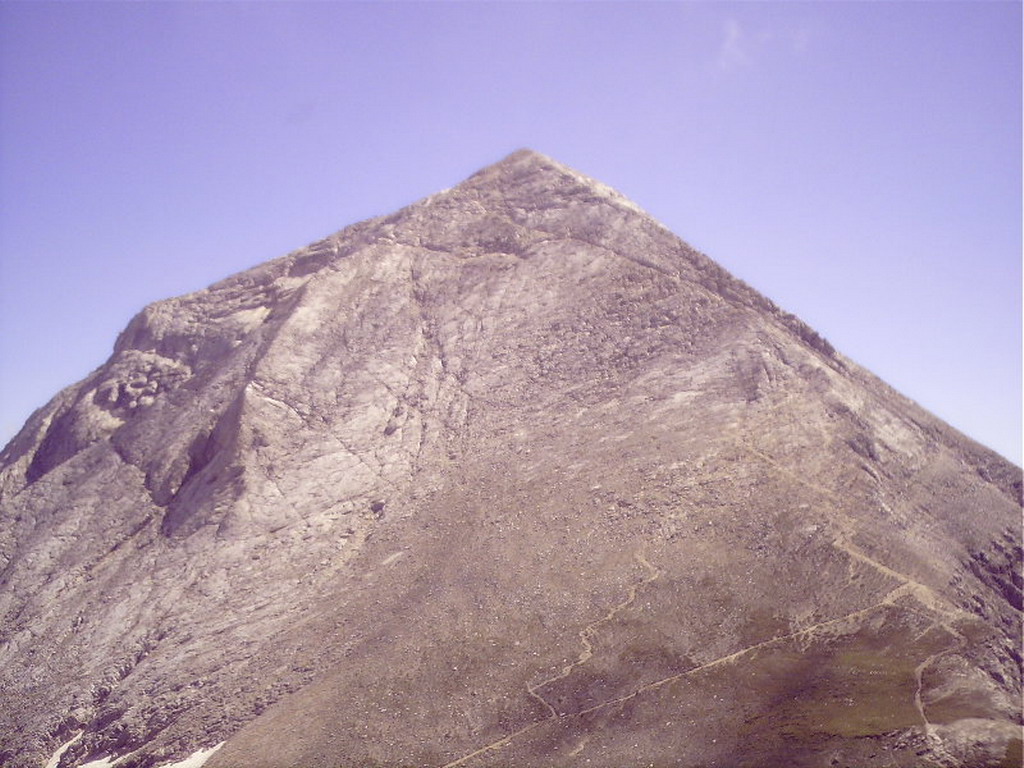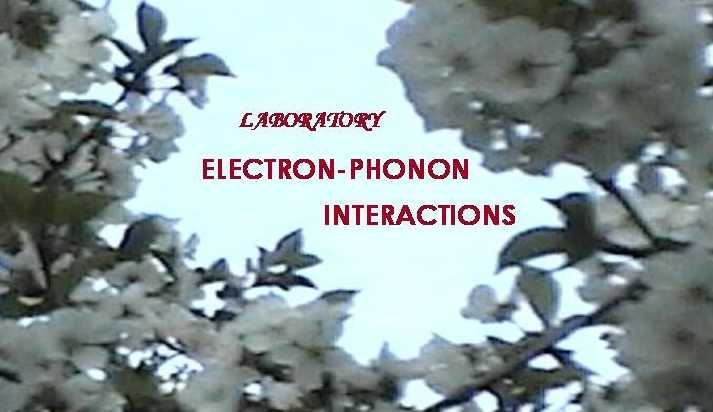|
We have been working on a phenomenon, called Surface Photo-Charge Effect (SPCE) for several years. This is a new effect. An important feature of the SPCE is its significant dependence on the specific properties of the irradiated sample. This fact reveals vast opportunities for rapid and contactless analysis of solids, liquids and gases.
Investigating solids, liquids and gases by
Surface Photo - Charge Effect (SPCE)
The effect: the interaction of every substance with electromagnetic field induces an alternating potential difference with the same frequency as the frequency of the incident field. Experimentally, the potential difference between the irradiated sample and the common electric ground of the system was measured.
In contrast to other similar effects, the SPCE is characteristic of all kinds of solids and this makes it very interesting from scientific as well as from practical point of view. The applications experimentally tested by us are:
- By this method one can obtain valuable information about the irradiated solid surfaces, namely about the presence of mechanical defects and imperfections, impurities and surface states, surface electrical characteristics such as a type of conductivity, etc. One can trace the shape of the produced surface structures, for example, by ion implantation.
- Remote retrieval of information on a solid object and its displacement.
- Another field of applications is the gas, vapor and liquid sensors development on the basis of SPCE. The method provides information on fluids and processes taking place therein. For example, it is possible to monitor the octane factor of gasoline, impurities in liquids, the concentration of gases.
- Construct a level-meter indicating the level of a liquid wihout moving parts.
- Our experiments showed that one can monitor the deposition of materials from solution. For example, such a change was observed when CaCO3 was deposited on a metal surface from water.
- Up to now we have showed experimentally that it is possible to make express contactless chemical composition test of samples, for example counterfeit coins - the detector could be designed relatively economically and small in size, so as to be installed in any coin-operated machine. In addition to the protection of the national currency, the SPCE may find many other applications. For example, various types of absorbing filters for gases and liquids can be monitored to determine when they need to be replaced. Test of drinking water from the public water distribution system or that distributed to an army in field operations is technically feasible. Very often when making special details in industry, it is important to know if there are changes in the chemical composition of the material from which they are being made. At present such control on every separate detail is not usually done. The offered method can also be applied to such purposes.
- The above effect can be applied for registration of specific reactions and processes taking place in milk. We propose a technique for instantaneous detection of inhibitors (antibiotics) in milk. We suggest possible methods for quality control of milk and other foods.
- The possibility of monitoring the quality, of raw materials in particular for the manufacture of ceramic products and especially for bricks has been investigated. This monitoring solves technological, environmental and energy saving problems. The obtained results indicate the possibility of control of incoming raw materials and other industrial processes.
- Detection of changes in materials due to exposure to radiation (X-Rays, gamma rays or cosmic rays).
Resume of the Scientific Activity
INTERACTIONS OF ELECTROMAGNETIC RADIATION WITH SOLIDS
A: ACOUSTOELECTRIC INVESTIGATIONS:
Initially I worked on acoustoelectric effects in piezoelectric-semiconductor structures, where a semiconductor was irradiated by the electric field accompanying a Surface acoustic wave (SAW). The main results in this direction were:
For the first time was proposed an experimental proof of the change in sign of the Transverse acoustoelectric voltage (TAV) in a lithium niobate-semiconductor structure with separated media on changing the conductivity of the semiconductor or the frequency of the surface acoustic wave. Other authors have predicted this effect theoretically.
The kinetics of TAV was clarified and the possibility for transition from one-peak to two-peak shape of the signal due to processes in the semiconductor is proven.
For the first time an equivalent scheme of the piezoelectric-semiconductor structure was proposed, which helps explain some peculiarities of TAV.
For the first time an experimental observation of transverse and longitudinal acoustoelectric effect on reflection of bulk acoustostic waves was accomplished. The investigations show that their behaviour is similar to that of SAW, including the change of sign of TAV.
A fast comparative method was proposed for qualitative determination of the spatial separation of the surface states in semiconductors by using TAV. The method is contactless and non-destructive.
Acoustoelectric voltage in a direction perpendicular to the signal plane in a piezoelectric-semiconductor structure (anomalous acoustoelectric effect) was observed and investigated. An explanation for its appearance was proposed.
Laboratory models of an acoustoelectron convolver were constructed, implementing a new technological technique, resulting in a number of improvements.
Semiconductor surfaces were investigated using acoustoelectronic methods.
For the first time, Transverse acoustoelectric effect in a piezoelectric - metal surface sample structure was observed.
B: SURFACE PHOTO-CHARGE EFFECT
Our work on the Transverse acoustoelectric effect led to the observation of the so-called “Surface photo-charge effect” (SPCE).
This is an effect, which consists of the following: the interaction of any solid with electromagnetic field induces an alternating potential difference with the same frequency as the frequency of the incident field. Experimentally, the potential difference between the irradiated sample and the common electric ground of the system was measured. In contrast to other similar effects, the SPCE is characteristic of all kinds of solids and this makes it very interesting from scientific as well as from practical point of view. An important feature of the SPCE is its significant dependence on the specific properties of the irradiated sample. This fact reveals vast opportunities for rapid and contactless analysis of solids, liquids and gases.
Possible physical models were suggested for the explanation of SPCE.
Promising possibilities for the application of SPCE were experimentally demonstrated, such as:
Obtaining valuable information about the illuminated solid's surface, namely for the presence of mechanical defects and imperfections.
Surface electrical characteristics, such as the type of conductivity can be investigated.
One can trace the shape of surface structures produced, for example, by ion implantation.
Remote retrieval of information on a solid object and its displacement.
Another field of applications is the gas, vapor and liquid sensors development on the basis of SPCE. The method provides information on fluids and processes taking place therein. For example, it is possible to monitor the octane factor of gasoline, impurities in liquids, the concentration of gases.
Construct a level-meter indicating the level of a liquid without moving parts.
Deposition of compounds contained in solutions could be monitored. For example, when CaCO3 is deposited on a metal surface from water.
Up to now we have shown experimentally that it is possible to do an express contactless chemical composition test of samples, for example counterfeit coins - the detector could be designed relatively economically and small in size, so as to be installed in any coin-operated machine. In addition to the protection of the national currency, the SPCE may find many other applications. For example, various types of absorbing filters for gases and liquids can be monitored to determine when they need to be replaced. Test of drinking water from the public water distribution system is technically feasible. Very often when making special details in industry, it is important to know if there are changes in the chemical composition of the material from which they are being made. At present such control on every separate detail is not usually done. The offered method can also be applied to such purposes.
The above effect can be applied for registration of specific reactions and processes taking place in milk. We propose a technique for instantaneous detection of inhibitors (antibiotics) in milk. We suggest possible methods for quality control of milk and other foods.

Visiting card:
Ognyan Ivanov
Electron-Phonon Interactions Laboratory
Georgi Nadjakov Institute of Solid State Physics
Bulgarian Academy of Sciences
72 Tzarigradsko Chaussee Blvd., 1784 Sofia, Bulgaria
Tel: +359 2 979 57 23; GSM: +359 899 97 78 80
Fax: +359 2 975 36 32
E-mail: ogi124@yahoo.com
|

